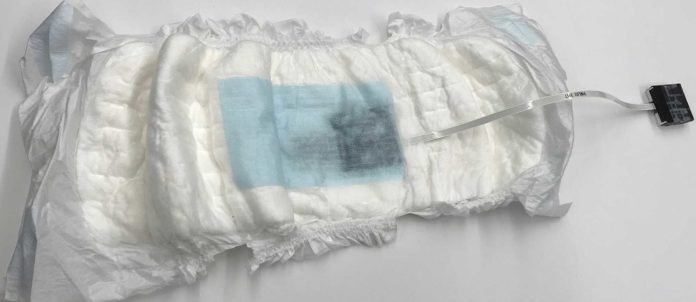A urinary tract infection (UTI) happens when bacteria (germs) get into the urinary tract. The most common place for a UTI to occur is in the bladder, yet infections also occur in the urethra, ureters, or kidneys. UTIs are effectively treated yet can cause issues whenever left untreated.
UTI can be a major source of serious difficulties in geriatric patients, specifically those suffering from neurodegenerative diseases. Likewise, for infants who experience problems in describing their symptoms, UTI may prompt serious development of the disease, making early identification of UTI crucial.
In a new study, scientists from Purdue University have come up with a new way to embed an autonomous sensor in diapers to detect UTIs better. When tested, the disposable device accurately detected the infection.
Babak Ziaie, a professor of electrical and computer engineering at Purdue, said, “We have at least two big advantages here with our device. Because it’s autonomous, it doesn’t require the patient or caregiver to obtain urine samples, and it can help detect an infection in people who either aren’t able to communicate their symptoms, or they don’t show typical symptoms.”
The sensor module consists of a paper-based colorimetric nitrate sensor, urine-activated batteries, a boost dc-dc converter, a low-power sensor interface utilizing pulse width modulation, and a Bluetooth low-energy module for wireless transmission.
The bandage-sized sensor is self-powered. Once exposed to urine, the battery provides power to the sensor circuitry. The sensor checks for nitrites and chemical compounds commonly associated with urinary tract infections and wirelessly sends the results via a smartphone to the patient, caregiver, and health care network if required.
Byunghoo Jung, a Purdue professor of electrical and computer engineering, said, “The autonomous feature improves accuracy because it checks for UTIs regularly, increasing the amount of data. It can also track changes in the status of UTIs over time.”
The researchers worked with the Purdue Research Foundation Office of Technology Commercialization to patent the technology. The research team is looking for additional partners and those interested in licensing the technology.
More information on the diaper-embedded sensor is available in a paper published in the journal IEEE Transactions on Biomedical Circuits and Systems.
